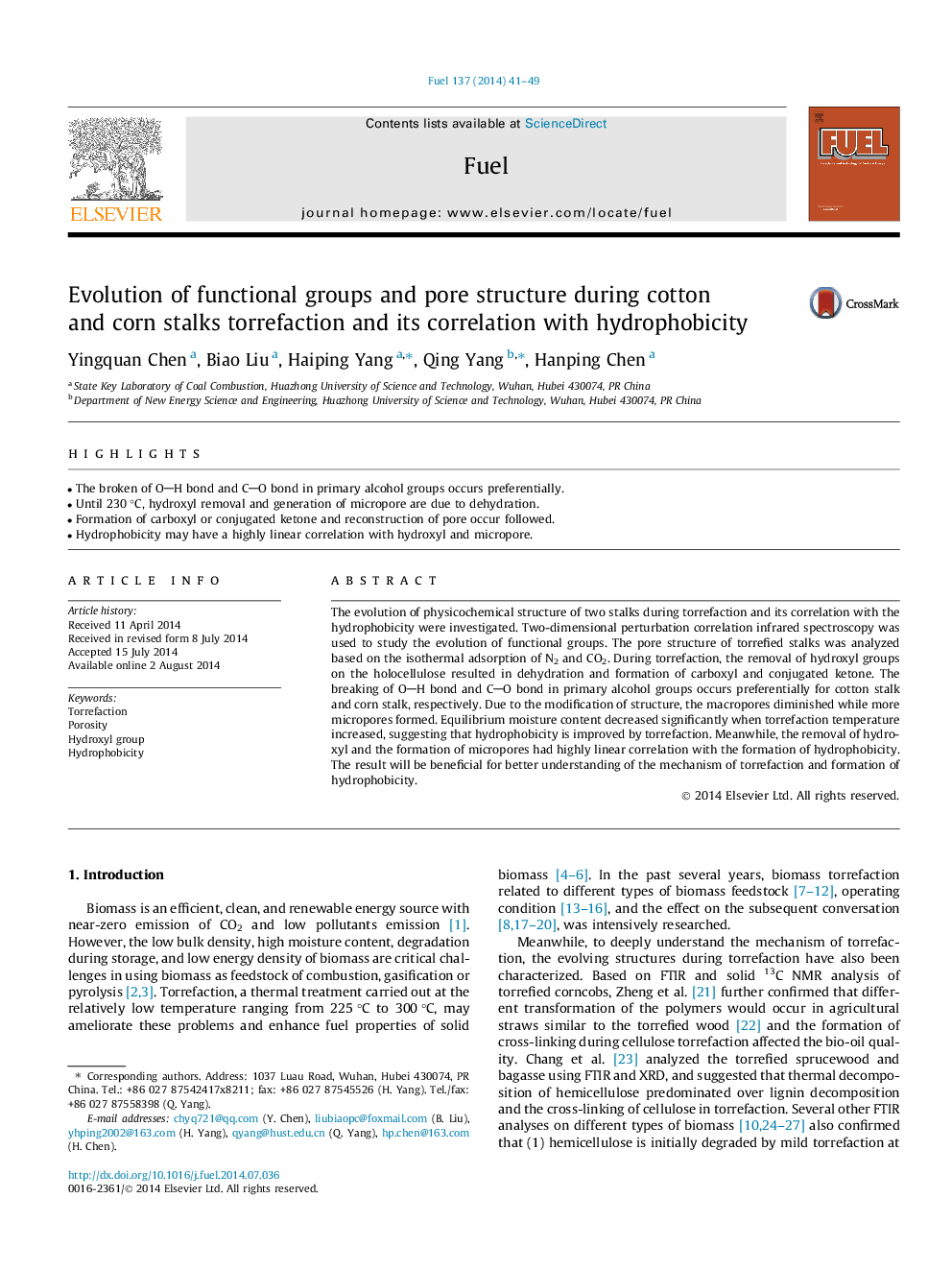| Article ID | Journal | Published Year | Pages | File Type |
|---|---|---|---|---|
| 206022 | Fuel | 2014 | 9 Pages |
•The broken of OH bond and CO bond in primary alcohol groups occurs preferentially.•Until 230 °C, hydroxyl removal and generation of micropore are due to dehydration.•Formation of carboxyl or conjugated ketone and reconstruction of pore occur followed.•Hydrophobicity may have a highly linear correlation with hydroxyl and micropore.
The evolution of physicochemical structure of two stalks during torrefaction and its correlation with the hydrophobicity were investigated. Two-dimensional perturbation correlation infrared spectroscopy was used to study the evolution of functional groups. The pore structure of torrefied stalks was analyzed based on the isothermal adsorption of N2 and CO2. During torrefaction, the removal of hydroxyl groups on the holocellulose resulted in dehydration and formation of carboxyl and conjugated ketone. The breaking of OH bond and CO bond in primary alcohol groups occurs preferentially for cotton stalk and corn stalk, respectively. Due to the modification of structure, the macropores diminished while more micropores formed. Equilibrium moisture content decreased significantly when torrefaction temperature increased, suggesting that hydrophobicity is improved by torrefaction. Meanwhile, the removal of hydroxyl and the formation of micropores had highly linear correlation with the formation of hydrophobicity. The result will be beneficial for better understanding of the mechanism of torrefaction and formation of hydrophobicity.
